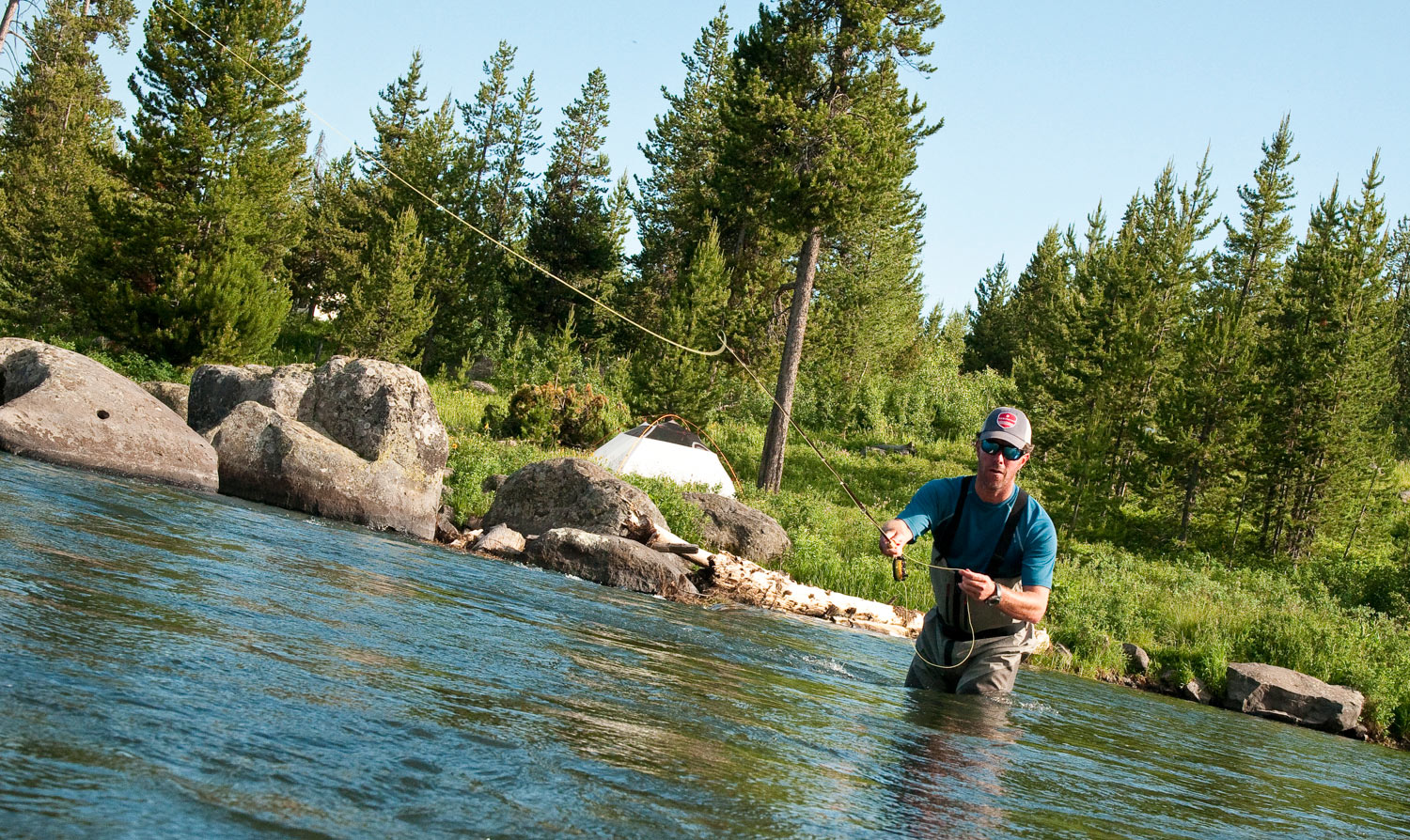By Louis Cahill
One of the hardest things for beginner fly anglers is getting the cast started.
I was reminded of this the other day when fishing with a first-time angler. It’s easy for an experienced caster, who’s teaching someone, to launch right into the dynamics of the fly cast without explaining how to get their fly in the air in the first place. It’s a dead-simple topic, but stay with me while I cover it for those who need it.
There are a couple of common problems that get the fly cast off to a rough start.
Slack
By far the most common problem is slack in the line. no matter how good a caster you are, you can’t cast a slack line. I’ve watched a lot of new anglers start flailing away with their fly at their feet, creating wild hoops of line everywhere. It never ends well. Before beginning your cast, be sure your line is tight and straight and your rod tip is low.
There are two simple ways to insure this happens. The easiest is to strip in any slack line. New casters are often hesitant to do this. They’ve worked so hard to get that line out, they don’t want to strip it back in but that’s the best way to start. Just point the rod at the fly and strip until the line is tight. Then lift the fly and cast.
Another way to get your line tight is to let the current do it for you. If you’re fishing in current, you can let the fly drift downstream until the line is tight and start the cast with the forward stroke. This is the same technique as the water haul and it’s very useful on small streams.
Fly Depth
Another common problem is fly depth. When fishing subsurface, especially with heavy nymph rigs, flies can sink deep and must be lifted to the surface before the cast can start. Again, the real issue here is slack. Either the flies have sunk because of slack in the line or lifting them to the surface has required a good bit of rod movement and that has created slack.
The best way to deal with this issue is to strip in any slack, lift the flies, then roll cast to a good starting position for your next cast. If you’re having this problem, you’ll soon learn that keeping your line tight at all times will make your life as an angler much more enjoyable. Most annoying snags, tangles, hooked body parts and general clusters have their beginnings in slack. Keeping a good awareness of what your flies are doing and keeping them under control at all times is a skill you need to develop. Fly anglers must be good multitasks.
I think you’ll find that paying a little extra attention to how your cast begins will make a big difference in how well the cast forms. I hope this helps you get the slack out and start catching fish.
Louis Cahill Gink & Gasoline www.ginkandgasoline.com hookups@ginkandgasoline.com Sign Up For Our Weekly Newsletter!

Could not agree more on that point Louis, enough weight out of the top of the rod to get everything started can be a real issue for beginners … even the more advanced!
My own approach is to help guests get up and running with a Roll Cast first off, it does so many things well (as per your fly depth point) and is a great way to sort out that nasty slack line prior to going overhead, side etc.
Love the way you take simple stuff that so many would take for granted and turn it into a post. So useful and clearly explained.
Awesome post again! Most people want to start with the rod tip high, I always learned to start with the rod tip at or below the belt and have tension on the line, always have tension. Great reminders Louis!
One thing that I love about these posts is that I get the death stare whenever I tell my wife about these things. A simple forward to her work email with the link, problem solved!